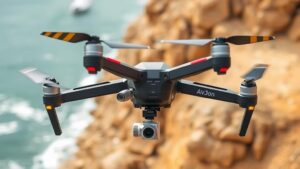Using Seismic Vibration Detectors to Identify Buried Hollow Objects or Caches
Using Seismic Vibration Detectors to Identify Buried Hollow Objects or Caches
Seismic vibration detectors have emerged as a pivotal tool in the quest to locate buried hollow objects or caches. Traditional archeological methods often rely on visual cues or invasive techniques that can disrupt the site. In contrast, seismic technology presents a non-invasive, efficient alternative for detecting anomalies in the subsurface structure. This article explores the mechanics of seismic vibration detection, the methodologies applied in identifying buried objects, and real-world examples illustrating its effectiveness.
The Science Behind Seismic Vibration Detection
Seismic vibration detectors capitalize on principles of physics, specifically wave propagation. When a seismic wave travels through the ground, it transmits energy that can be altered by changes in material density, porosity, and structure. Inputs from various sources–such as earthquakes, explosions, or human activities–generate these waves, which are captured by geophones or accelerometers.
Buried objects, due to their distinct acoustic signatures, can cause variations in seismic waves–referred to as reflection or refraction. For example, a hollow cache (such as a treasure chest) will create a void that alters the seismic energy dispersion, allowing detectors to identify geographic anomalies. This approach provides a significant advantage over conventional methods, as it can operate efficiently across varied terrains and conditions where traditional excavation would be impractical or damaging.
Methodologies Employing Seismic Technology
Several methodologies utilize seismic vibration detectors to locate buried hollow objects. The most prominent include:
- Active Seismic Surveys: In this method, controlled seismic waves are generated at the surface, and their reflections from subsurface structures are analyzed. This technique is particularly effective in mapping the geological layers and identifying anomalies.
- Passive Seismic Monitoring: This involves the use of existing seismic waves from environmental sources. By analyzing the recorded data, geophysicists can detect changes associated with buried structures with little to no perturbation of the surrounding environment.
- Seismic Tomography: Similar to medical imaging, seismic tomography combines data from multiple detectors to generate a three-dimensional image of the subsurface, highlighting areas of interest that may indicate buried anomalies.
Real-World Applications and Case Studies
The utilization of seismic technology has spanned various fields, from archaeology to engineering. One notable case is the examination of ancient archaeological sites in the Middle East. Seismic surveys have successfully located hidden chambers and water cisterns, offering insights into the social structures of bygone civilizations without compromising the integrity of the artifacts.
In an investigation in the Mediterranean region, researchers employed active seismic surveys to uncover a series of buried underground tombs. seismic waves indicated anomalies consistent with hollow spaces, allowing archaeologists to strategically excavate targeted areas rather than performing broad, intrusive digs.
Similarly, in engineering, seismic detectors have been critical in locating buried utilities and assessing infrastructure stability. For example, when planning urban development, seismic surveys can identify potential subsurface hazards, such as buried tanks or pipelines, which could pose risks during construction.
Challenges and Considerations
While seismic vibration detectors provide a wealth of benefits, the method is not without challenges. Environmental factors, such as soil type, saturation, and ambient noise, can significantly affect the accuracy of results. For example, clay-rich soils may attenuate seismic waves differently than sandy soils, complicating interpretations.
Also, the resolution of the detection can vary with the depth of the object and the frequency of the seismic waves employed. High-frequency waves offer better resolution but may be absorbed more readily by the soil, while lower frequencies penetrate deeper but can reduce clarity around small targets.
So, it is crucial for practitioners to consider these elements during survey planning and conduct comprehensive pre-survey analyses.
Actionable Takeaways
- Use seismic vibration detectors as a method for non-invasive exploration when searching for buried objects, effectively saving time and resources.
- Analyze environmental conditions and choose appropriate seismic frequencies to maximize detection efficacy.
- Collaborate with geophysicists and other experts to ensure a comprehensive understanding of subsurface characteristics and improve detection planning.
- Leverage technology for archaeological preservation by minimizing the disruption of historical artifacts while still conducting thorough explorations.
In summary, seismic vibration detectors present a valuable instrument in the field of archaeology and beyond, offering precise methodologies for identifying buried hollow objects and providing innovative solutions across various industries. With the continued advancement of technology and techniques, the potential applications for seismic detection are boundless.
